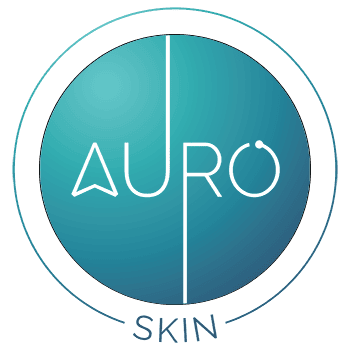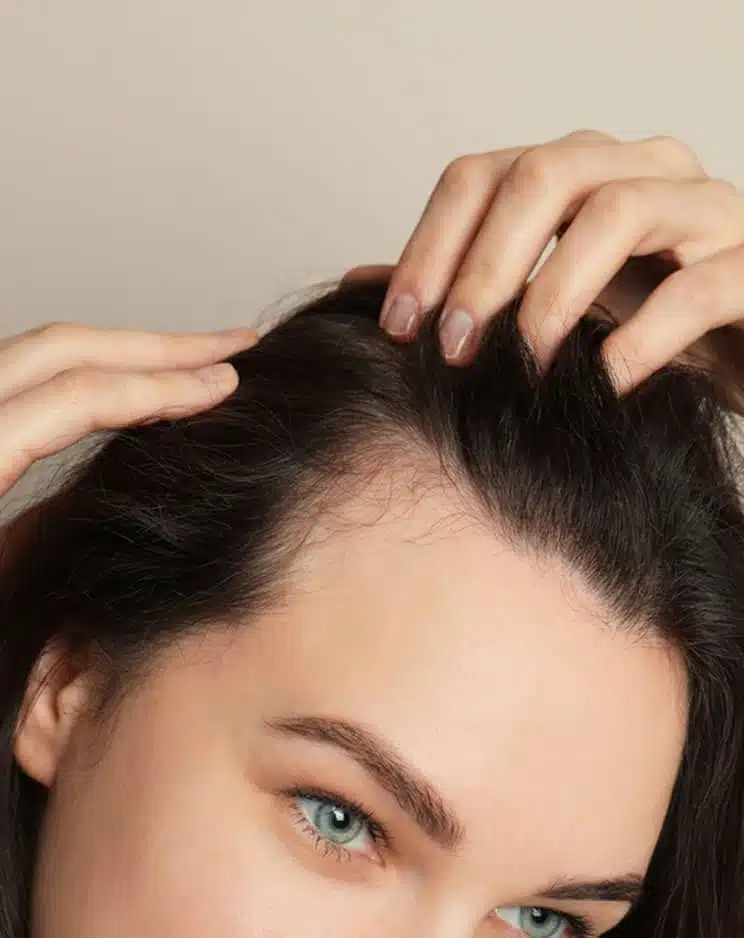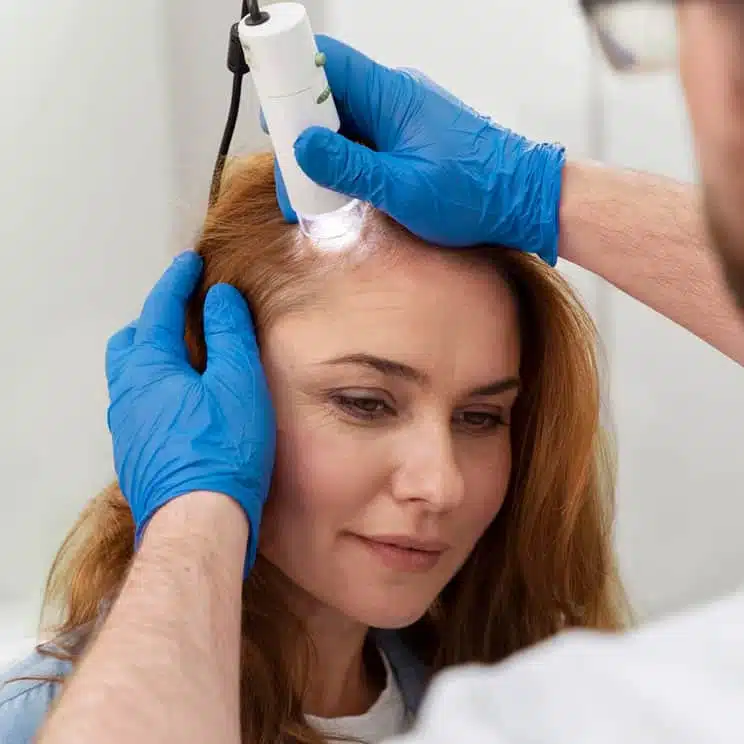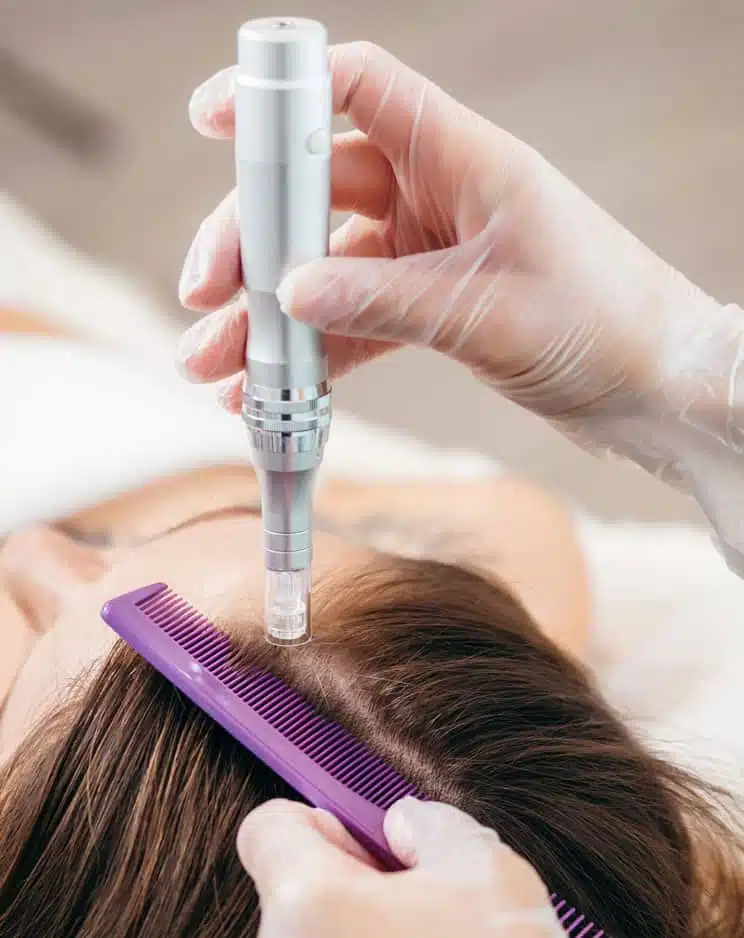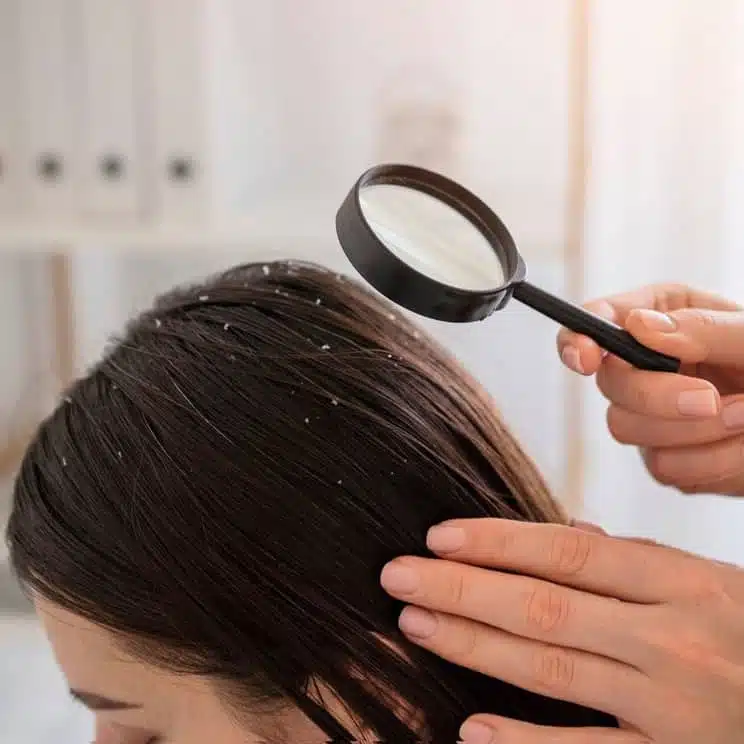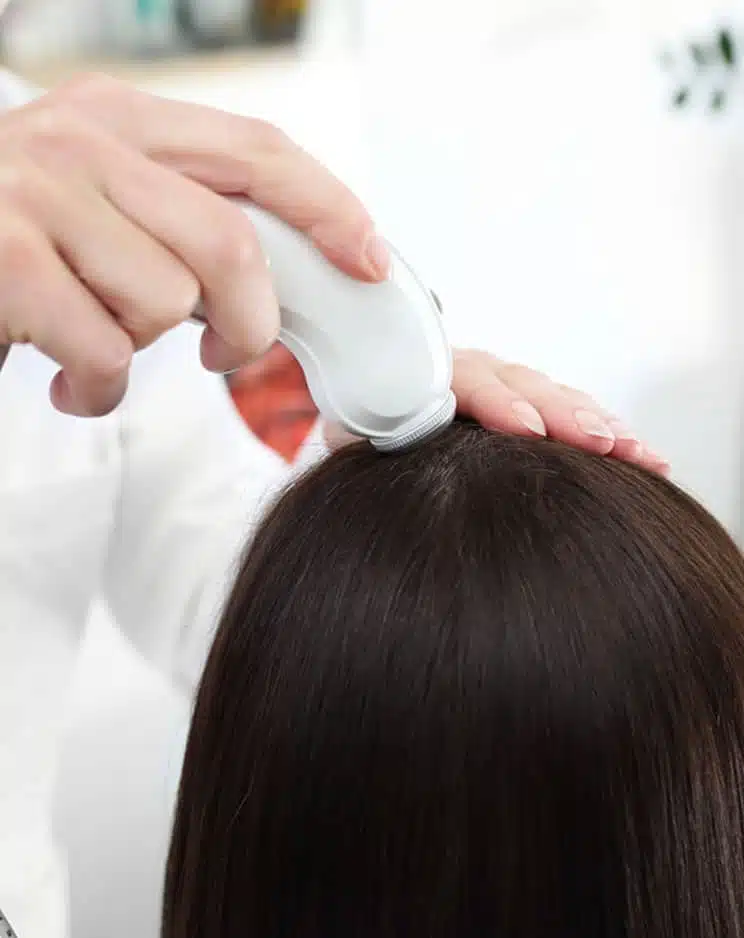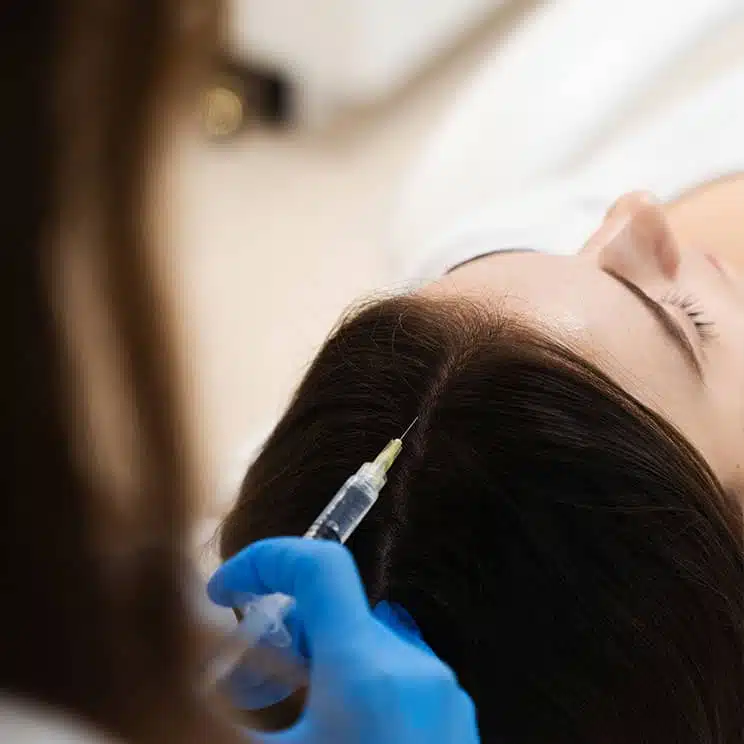- +91 91360 95925
- hello@auroskin.in
- 2nd Floor, Sapphire Plaza, Opp CNM School, Dadabhai Road, Vile Parle West, Mumbai
- About Us
- Services
- Skin
- Hair
- Nail
- Diagnostics
- Dermatosurgery
- Laser Treatments
- Aesthetics
- RF Skin Tightening Treatment
- Profilo Treatment
- Micropigmentation Treatment
- Dark Circle Removal Treatment
- Laser Vaginal Tightening Treatment
- Open Pores Treatment
- Botox Treatment
- Fillers Treatment
- Thread Lift Treatment
- Skin Patch | Allergy Testing Service
- Fillers Treatment
- Exosome Treatment
- Double Chin Reduction Treatment
- Patient Reviews
- Gallery
- Blogs
- Appointments
PRP hair treatment is a game-changing therapy that uses your own blood platelets to reactivate dormant hair follicles, giving you healthier, thicker hair. Unlike temporary solutions, PRP works at the root cause, promoting natural regrowth and strengthening of hair over time. Our PRP hair experts in Vile Parle provide advanced PRP techniques to help you get back your confidence with thicker, stronger hair.
What is PRP Hair Treatment, and How Does It Work?
PRP hair treatment is a non-invasive procedure that uses a concentrated form of blood platelets rich in growth factors. These growth factors stimulate dormant hair follicles, improve blood circulation and encourage natural hair regrowth.
Causes of hair loss that PRP can help with:
Causes of hair loss that PRP can help with:
- Genetic Hair Thinning: PRP can slow down hair loss and promote regrowth if male or female pattern baldness runs in your family.
- Postpartum or Stress-Induced Hair Loss: PRP accelerates recovery from excessive shedding due to hormonal changes or stress.
- Nutritional Deficiencies & Scalp Health Issues: PRP nourishes the scalp and improves hair thickness and quality.
- Medical Conditions: Hair loss due to conditions like alopecia areata can be managed effectively with PRP therapy.
At our skin clinic in Mumbai, our PRP hair experts will assess your condition and tailor the treatment to get you the best results.
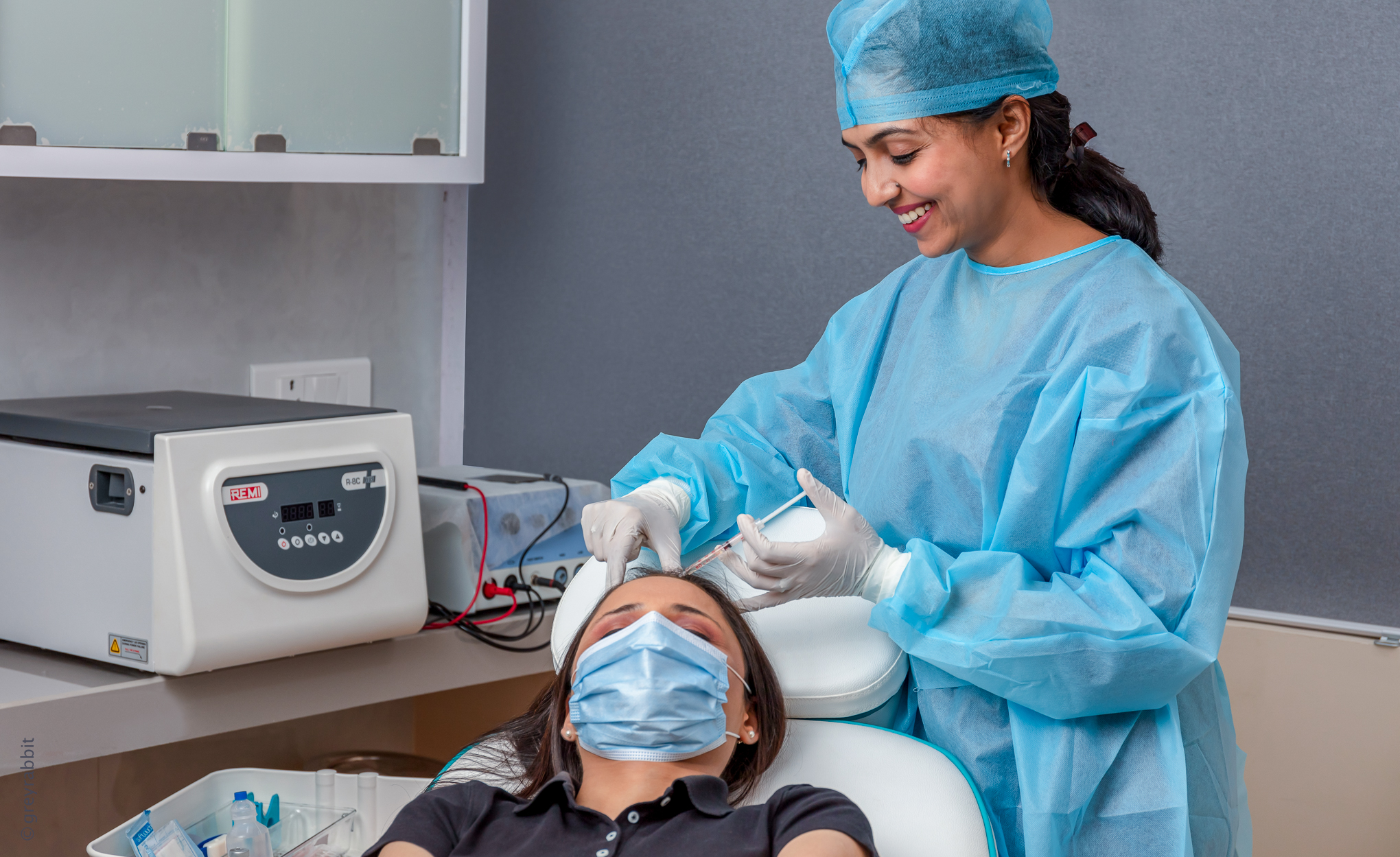


PRP Hair Treatment Procedure
1. Consultation
The first step in PRP hair treatment is a consultation with our PRP hair expert in Vile Parle. Since hair loss can have multiple causes, it is important to determine the root cause before starting treatment. Our experts will assess your scalp health, hair density, and medical history to help you customise the best treatment plan.2. Pre-Procedure
Before the procedure, preparation is required to get the best out of PRP therapy. Patients are advised to:- Avoid blood thinning medications like aspirin or certain supplements a few days before treatment, as these can affect platelet concentration.
- Eat a balanced diet and stay hydrated to promote healthy blood circulation and platelet quality.
- Wash your hair thoroughly on the day of the procedure, as the scalp should be clean and free of any styling products.
- Avoid alcohol and smoking at least 24-48 hours before treatment, as these can affect the results.
3.Procedure
The PRP hair treatment is a quick and non-invasive procedure that follows these steps:- Blood Collection: A small amount of blood is drawn from the patient’s arm like a routine blood test.
- PRP Preparation: The collected blood is then placed in a centrifuge machine spinning at high speed to separate platelet-rich plasma from other components.
- Scalp injection: The concentrated PRP is injected into specific areas of the scalp where thinning or loss of hair is present. These injections stimulate dormant hair follicles, improve blood circulation and promote hair regrowth.
4. AfterCare
After PRP hair treatment, don’t forget to follow proper aftercare to get the best results and scalp health. You should:- Not wash your hair for at least 24 hours after the procedure so that PRP can absorb well.
- Avoid using harsh shampoos, chemical treatments or hair styling products for a few days.
- Don’t expose yourself to direct sun and intense workouts or sauna for 48 hours to avoid irritation.
- Follow the treatment schedule; multiple PRP sessions are required for visible and long-lasting hair growth.
Benefits of PRP Hair Treatment
- Non-Surgical & Safe: Unlike hair transplants, PRP is a non-invasive treatment that uses natural components from your own blood, minimising risks and side effects.
- Stimulates Natural Hair Growth: PRP targets weak follicles and reactivates them for stronger, healthier hair without any artificial solutions.
- Reduces Hair Shedding: Regular PRP sessions decrease hair fall, and you will retain more hair over time.
- Improves Hair Thickness & Density: Patients notice thicker strands, fuller volume and improved scalp coverage after treatment.
- Minimal Downtime & Discomfort: PRP injections are virtually painless, and you can go back to your daily routine immediately.

Why Choose Us for PRP Hair Treatment?
Choosing the right PRP hair doctor is important to get the best results. Our clinic offers the best PRP treatment in Vile Parle, using advanced technology, experienced dermatologists, and personalised care. With advanced techniques and high-quality PRP processing, we ensure effective hair restoration with visible results. Whether you are looking for doctors for PRP hair treatment or expert advice on hair treatment in Mumbai, we are here to help you get stronger, healthier hair. Book a consultation today and start your journey to hair growth with our expert PRP treatments!
FAQ's Related to PRP Hair Treatment
What is PRP hair treatment?
PRP (Platelet-Rich Plasma) hair treatment uses your own blood’s growth factors to stimulate dormant hair follicles and boost hair density.
Who is an ideal candidate for PRP hair therapy?
It’s suitable for men or women with thinning hair, early-stage hair loss or those looking to complement a hair transplant.
How is PRP hair treatment performed?
A small blood sample is drawn, processed in a centrifuge to isolate platelets, and then injected into the scalp where hair thinning is noted.
How many sessions of PRP are needed for hair results?
Typically 3-4 monthly sessions are recommended initially, followed by maintenance treatments every 6-12 months.
Is there downtime after a PRP hair session?
There is minimal downtime; you may have mild scalp soreness or redness, but you can usually resume routine activities the same day.
How effective is PRP for hair regrowth?
PRP can significantly improve hair thickness and density, especially in early hair loss, though results vary by individual.
What is the cost of PRP hair treatment in Mumbai?
Costs vary by clinic, treatment area and number of sessions; in Mumbai, sessions range approximately from ₹10,000 to ₹20,000 or more per session.
Is PRP hair treatment safe?
Yes, because it uses your own blood, the risk of allergy is very low, and it’s considered a safe, minimally invasive hair therapy.
Can PRP be combined with other hair-loss treatments?
Absolutely yes, PRP is often paired with medicines (minoxidil/finasteride), microneedling or hair transplants to enhance outcomes.
Why choose Auro Skin Clinic for PRP hair treatment?
The clinic offers expert dermatologists, advanced scalp diagnostics, personalised PRP plans and modern facilities in Mumbai.
Get Support
